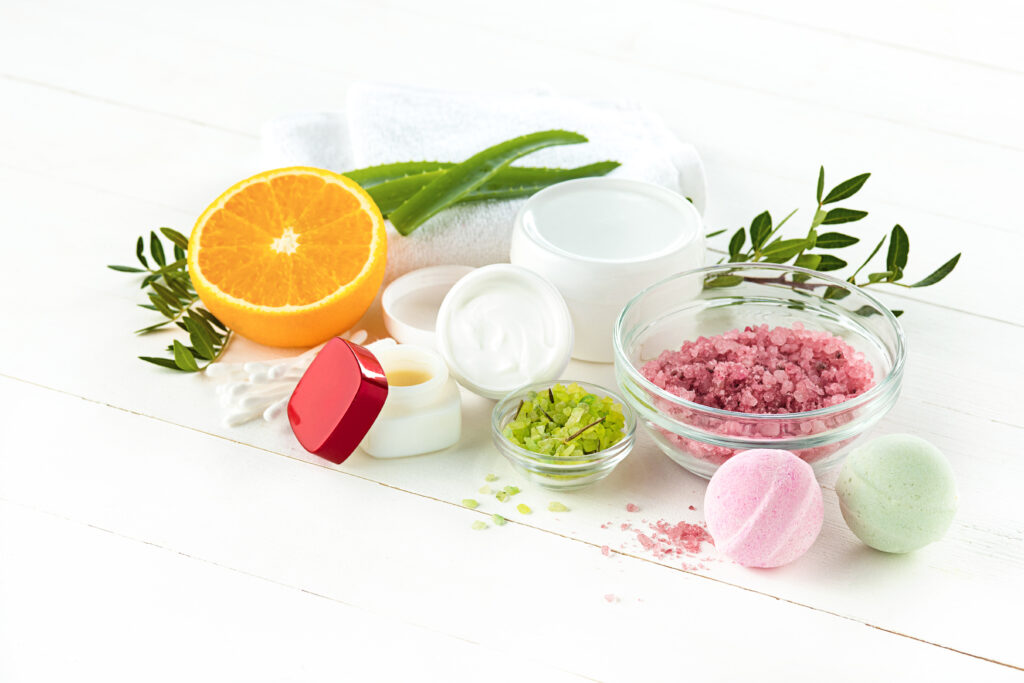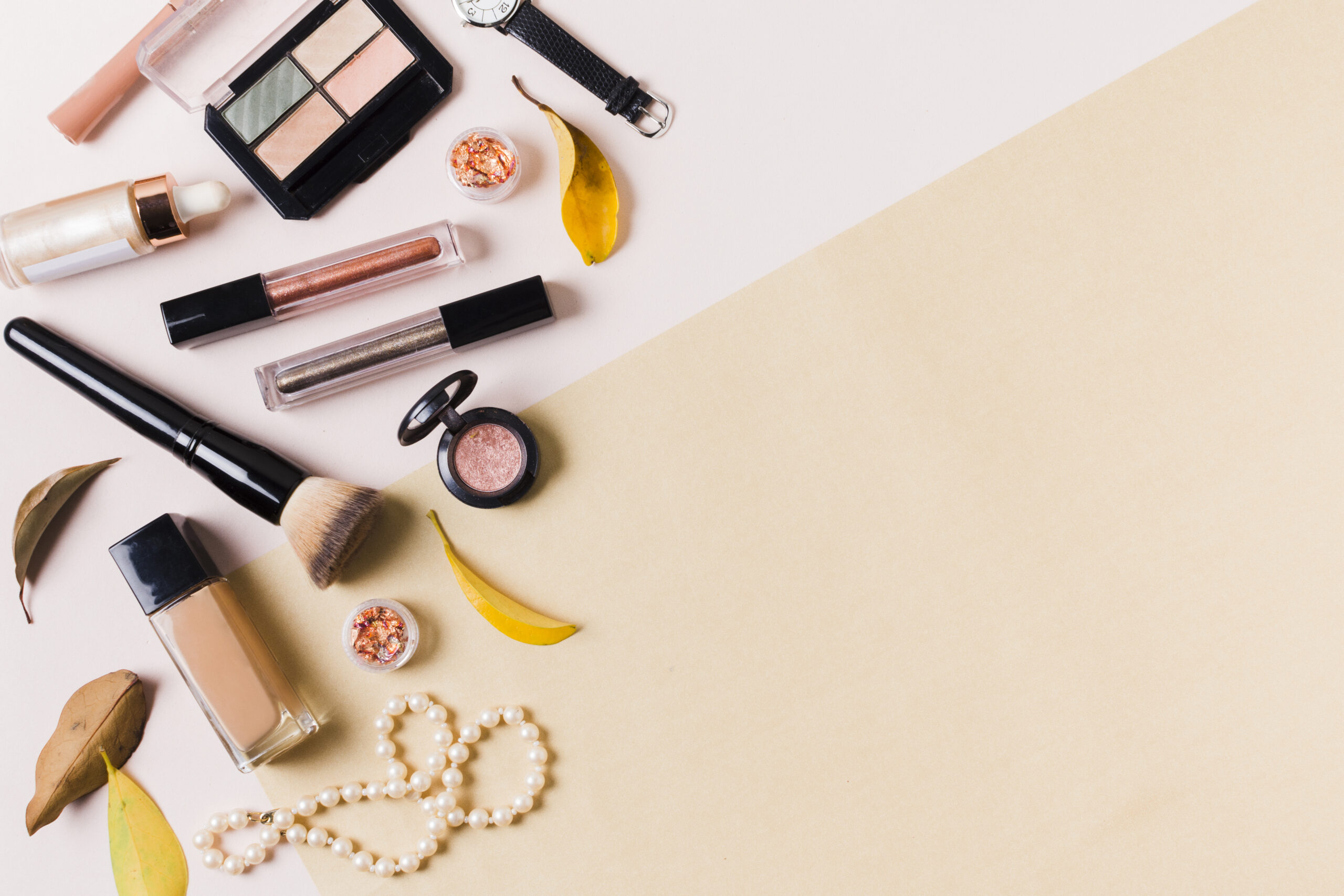Top 10 Skincare Ingredients You Should Include in Your Routine

Skincare can feel overwhelming with the sheer number of products available today. From serums to moisturizers, they all promise radiant, youthful skin, but the secret often lies in the ingredients. Understanding what works for your skin and why is the first step to achieving your glow goals. To make things easier, here are the top 10 skincare ingredients that should have a permanent spot in your routine.
1. Hyaluronic Acid – The Hydration Hero – “Top 10 Skincare Ingredients “
Hyaluronic acid (HA) is a powerhouse for hydration. This naturally occurring molecule holds up to 1,000 times its weight in water, making it essential for maintaining moisture in your skin.
Benefits:
- Plumps and hydrates the skin, reducing the appearance of fine lines.
- Suitable for all skin types, especially dry or dehydrated skin.
How to Use:
Look for HA in serums or moisturizers, and apply it on damp skin to lock in moisture.
2. Vitamin C – The Brightening Booster – “Top 10 Skincare Ingredients “
Vitamin C is a must-have ingredient for radiant skin. It’s a powerful antioxidant that protects your skin from environmental damage while brightening your complexion.
Benefits:
- Fades dark spots and hyperpigmentation.
- Boosts collagen production for firmer skin.
How to Use:
Use a vitamin C serum in the morning after cleansing and before applying sunscreen. Opt for stable formulations like L-ascorbic acid for maximum effectiveness.
3. Retinol – The Anti-Aging Superstar – “Top 10 Skincare Ingredients “
Retinol (a derivative of Vitamin A) is one of the most researched and effective skincare ingredients. It’s known for its ability to improve skin texture, minimize wrinkles, and clear up acne.
Benefits:
- Increases cell turnover, promoting fresh, smooth skin.
- Helps treat acne and reduces signs of aging.
How to Use:
Start with a low concentration (like 0.3%) and use it at night. Pair it with a moisturizer to prevent dryness and irritation.
4. Niacinamide – The Skin Multitasker – “Top 10 Skincare Ingredients “
Niacinamide, a form of Vitamin B3, is one of the most versatile skincare ingredients. It addresses a wide range of concerns without irritating the skin.
Benefits:
- Minimizes large pores and reduces oiliness.
- Improves skin tone and strengthens the skin barrier.
How to Use:
This ingredient is typically found in serums or moisturizers and works well in both your morning and evening routine.
5. Salicylic Acid – The Acne Fighter – “Top 10 Skincare Ingredients “
If you struggle with breakouts, salicylic acid is your best friend. It’s a beta hydroxy acid (BHA) that exfoliates deep within your pores.
Benefits:
- Clears blackheads, whiteheads, and other blemishes.
- Reduces redness and inflammation caused by acne.
How to Use:
Use a salicylic acid cleanser or spot treatment once a day, especially if you have oily or acne-prone skin.
6. Glycolic Acid – The Gentle Exfoliator – “Top 10 Skincare Ingredients “
Glycolic acid, an alpha hydroxy acid (AHA), is a chemical exfoliant that reveals fresh, glowing skin by gently removing dead skin cells.
Benefits:
- Improves skin texture and fades acne scars.
- Boosts skin radiance and reduces fine lines.
How to Use:
Incorporate glycolic acid in your routine 1–2 times a week through toners or serums. Always follow with sunscreen, as exfoliation makes your skin more sensitive to UV rays.
7. Ceramides – The Skin Barrier Builder – “Top 10 Skincare Ingredients “
Ceramides are lipids (fats) naturally found in the skin, essential for maintaining a healthy skin barrier. They lock in moisture and protect against external irritants.
Benefits:
- Repairs and strengthens the skin barrier.
- Ideal for dry, sensitive, or eczema-prone skin.
How to Use:
Look for ceramide-rich moisturizers or creams, especially during colder months when your skin needs extra hydration.
8. Peptides – The Firmness Enhancer – “Top 10 Skincare Ingredients “
Peptides are short chains of amino acids that serve as the building blocks of proteins like collagen and elastin, which keep your skin firm and youthful.
Benefits:
- Improves skin elasticity and reduces fine lines.
- Promotes skin repair and renewal.
How to Use:
Peptides work best in serums or moisturizers and can be used both day and night.
9. Sunscreen (SPF) – The Skin Protector – “Top 10 Skincare Ingredients “
Though not technically an “ingredient,” SPF deserves a spot on this list because it’s the most important part of any skincare routine. Sunscreen protects your skin from harmful UV rays, preventing premature aging, sunburn, and even skin cancer.
Benefits:
- Prevents dark spots, fine lines, and wrinkles.
- Shields your skin from environmental damage.
How to Use:
Apply a broad-spectrum sunscreen with at least SPF 30 every morning, even on cloudy days. Reapply every 2–3 hours if you’re outdoors.
10. Aloe Vera – The Soothing Savior – “Top 10 Skincare Ingredients “
Aloe vera is a natural ingredient known for its calming and healing properties. It’s great for soothing irritated or sunburned skin.
Benefits:
- Reduces redness, inflammation, and irritation.
- Hydrates and cools the skin.
How to Use:
Use aloe vera gel as a soothing mask or as part of your after-sun care routine.
Bonus Tips for Incorporating Ingredients
- Patch Test First: Before adding any new ingredient to your routine, do a patch test to ensure it doesn’t irritate your skin.
- Don’t Overdo It: Using too many active ingredients at once can harm your skin barrier. Build your routine slowly.
- Layer Correctly: Apply products from thinnest to thickest consistency (e.g., serum before moisturizer).
Building a Routine with These Ingredients
A basic skincare routine using these ingredients might look like this:
Morning:
- Cleanser (optional: salicylic acid for acne-prone skin)
- Vitamin C serum
- Moisturizer with ceramides
- Sunscreen
Night:
- Cleanser (optional: glycolic acid or salicylic acid if exfoliating)
- Niacinamide serum or retinol (alternate days)
- Peptide-rich moisturizer
conclusion
Skincare doesn’t have to be complicated. By focusing on these powerhouse ingredients, you can address various skin concerns while maintaining a healthy, glowing complexion. Whether you’re battling acne, fighting fine lines, or just keeping your skin hydrated, the right ingredients can make all the difference. Remember, consistency is key, so give your skin the time it needs to show results!
Here’s a table with recommended products for each skincare ingredient, suitable for a variety of budgets and skin types:
| Ingredient | Product Name | Key Features | Price Range |
|---|---|---|---|
| Hyaluronic Acid | 1. The Ordinary Hyaluronic Acid 2% + B5 | Lightweight serum, hydrates deeply, suitable for all skin types. | $10–$15 |
| 2. Neutrogena Hydro Boost Water Gel | Gel-based moisturizer, ideal for oily and combination skin. | $20–$25 | |
| Vitamin C | 1. TruSkin Vitamin C Serum | Brightens skin, reduces dark spots, combines Vitamin C with hyaluronic acid and Vitamin E. | $20–$25 |
| 2. SkinCeuticals C E Ferulic | High-strength Vitamin C serum, great for anti-aging and hyperpigmentation. | $160–$180 | |
| Retinol | 1. CeraVe Resurfacing Retinol Serum | Reduces acne scars and dark spots, beginner-friendly formulation. | $15–$20 |
| 2. Differin Adapalene Gel 0.1% | FDA-approved retinoid for acne treatment, also smoothens skin texture. | $12–$15 | |
| Niacinamide | 1. The Ordinary Niacinamide 10% + Zinc 1% | Controls oil, minimizes pores, and evens out skin tone. | $6–$10 |
| 2. Paula’s Choice 10% Niacinamide Booster | Higher strength, suitable for addressing stubborn discoloration and fine lines. | $40–$50 | |
| Salicylic Acid | 1. CeraVe Renewing SA Cleanser | Gentle exfoliating cleanser, reduces breakouts without drying. | $12–$15 |
| 2. Paula’s Choice Skin Perfecting 2% BHA Exfoliant | Cult favorite for unclogging pores and smoothing texture. | $30–$35 | |
| Glycolic Acid | 1. Pixi Glow Tonic | Alcohol-free toner with 5% glycolic acid, suitable for daily exfoliation. | $15–$20 |
| 2. The Ordinary Glycolic Acid 7% Toning Solution | Stronger formulation for brighter, smoother skin. | $8–$12 | |
| Ceramides | 1. CeraVe Moisturizing Cream | Affordable, deeply hydrating, and repairs the skin barrier. | $15–$20 |
| 2. Dr. Jart+ Ceramidin Cream | Rich cream for intense hydration and barrier repair, ideal for dry or sensitive skin. | $40–$50 | |
| Peptides | 1. The Ordinary Buffet Serum | Multi-peptide serum for anti-aging and hydration. | $15–$20 |
| 2. Olay Regenerist Micro-Sculpting Cream | Contains peptides and niacinamide for firming and hydration. | $25–$30 | |
| Sunscreen (SPF) | 1. La Roche-Posay Anthelios Melt-in Milk Sunscreen | Lightweight, non-greasy, broad-spectrum SPF 100 for maximum protection. | $30–$35 |
| 2. Supergoop! Unseen Sunscreen SPF 40 | Weightless and invisible sunscreen, great for wearing under makeup. | $35–$40 | |
| Aloe Vera | 1. Nature Republic Aloe Vera Gel | Soothing and hydrating, made with 92% aloe vera. | $8–$12 |
| 2. Innisfree Aloe Revital Soothing Gel | Lightweight gel that calms and hydrates skin. | $10–$15 |
Notes on Choosing Products:
- Always consider your skin type (oily, dry, combination, or sensitive) when selecting products.
- Start with one active ingredient at a time to avoid irritation.
- For sensitive skin, patch test before use and look for fragrance-free formulations.
Here’s a breakdown of product recommendations tailored to specific skin types to help you choose the best fit for your needs:
1. For Oily Skin
Oily skin often struggles with excess sebum, clogged pores, and acne. Focus on lightweight, non-comedogenic products that control oil production.
| Ingredient | Product Name | Why It’s Good for Oily Skin |
|---|---|---|
| Hyaluronic Acid | Neutrogena Hydro Boost Water Gel | Lightweight gel formula hydrates without leaving a greasy finish. |
| Niacinamide | The Ordinary Niacinamide 10% + Zinc 1% | Controls oil production and reduces the appearance of pores. |
| Salicylic Acid | CeraVe Renewing SA Cleanser | Clears excess oil and unclogs pores while being gentle on the skin. |
| Sunscreen (SPF) | La Roche-Posay Anthelios Ultra Light Sunscreen SPF 50 | Non-greasy, fast-absorbing, and provides broad-spectrum protection. |
| Retinol | Differin Gel (Adapalene 0.1%) | Prevents acne and improves texture while being less irritating for oily skin. |
2. For Dry Skin
Dry skin needs intense hydration and barrier repair. Look for moisturizing and nourishing ingredients.
| Ingredient | Product Name | Why It’s Good for Dry Skin |
|---|---|---|
| Hyaluronic Acid | Vichy Mineral 89 Hydrating Serum | Provides deep hydration and plumps dry skin. |
| Ceramides | CeraVe Moisturizing Cream | Rich in ceramides to repair the skin barrier and lock in moisture. |
| Vitamin C | Kiehl’s Powerful-Strength Vitamin C Serum | Hydrating formula with 12.5% Vitamin C and hyaluronic acid for a radiant glow. |
| Peptides | Drunk Elephant Protini Polypeptide Cream | Restores moisture and improves skin elasticity. |
| Aloe Vera | Nature Republic Aloe Vera Gel | Soothes dryness and irritation while lightly hydrating the skin. |
3. For Combination Skin
Combination skin needs a balance between hydrating dry areas and controlling oil in the T-zone. Choose versatile, non-heavy products.
| Ingredient | Product Name | Why It’s Good for Combination Skin |
|---|---|---|
| Niacinamide | Paula’s Choice 10% Niacinamide Booster | Balances oil in the T-zone while improving overall skin tone. |
| Hyaluronic Acid | The Ordinary Hyaluronic Acid 2% + B5 | Provides lightweight hydration suitable for both dry and oily areas. |
| Glycolic Acid | Pixi Glow Tonic | Gently exfoliates to keep pores clear while brightening dry patches. |
| Retinol | Olay Regenerist Retinol 24 Night Moisturizer | Hydrates while improving skin tone and texture without over-drying. |
| Sunscreen (SPF) | Supergoop! Unseen Sunscreen SPF 40 | Weightless, matte-finish sunscreen perfect for a combination skin type. |
4. For Sensitive Skin
Sensitive skin requires calming, fragrance-free, and gentle products to prevent irritation.
| Ingredient | Product Name | Why It’s Good for Sensitive Skin |
|---|---|---|
| Aloe Vera | Innisfree Aloe Revital Soothing Gel | Soothes redness and irritation with a lightweight formula. |
| Ceramides | La Roche-Posay Lipikar Balm AP+ | Repairs and strengthens the skin barrier without causing sensitivity. |
| Niacinamide | CeraVe PM Facial Moisturizing Lotion | Contains niacinamide to calm irritation while hydrating. |
| Vitamin C | Allies of Skin 20% Vitamin C Brightening Serum | Gentle yet effective, suitable for brightening without irritation. |
| Sunscreen (SPF) | Aveeno Positively Mineral Sensitive Skin SPF 50 | Mineral-based sunscreen that’s non-irritating and protects sensitive skin. |
5. For Acne-Prone Skin
Acne-prone skin benefits from anti-inflammatory and pore-clearing ingredients. Avoid heavy, greasy formulations.
| Ingredient | Product Name | Why It’s Good for Acne-Prone Skin |
|---|---|---|
| Salicylic Acid | Paula’s Choice Skin Perfecting 2% BHA Liquid Exfoliant | Exfoliates inside the pores to prevent and treat breakouts. |
| Niacinamide | The Inkey List Niacinamide Serum | Controls oil, reduces redness, and soothes inflammation caused by acne. |
| Retinol | La Roche-Posay Effaclar Adapalene Gel 0.1% | Treats active acne and prevents future breakouts without being too harsh. |
| Glycolic Acid | The Ordinary Glycolic Acid 7% Toning Solution | Exfoliates dead skin cells to prevent clogged pores and dullness. |
| Sunscreen (SPF) | EltaMD UV Clear Broad-Spectrum SPF 46 | Lightweight sunscreen with niacinamide, perfect for acne-prone skin. |
6. For Mature/Aging Skin
Mature skin requires hydration, collagen-boosting ingredients, and antioxidants to combat wrinkles and loss of elasticity.
| Ingredient | Product Name | Why It’s Good for Mature Skin |
|---|---|---|
| Peptides | The Ordinary Matrixyl 10% + HA | Targets fine lines and wrinkles while improving elasticity. |
| Vitamin C | SkinCeuticals C E Ferulic | Boosts collagen and brightens skin, reducing visible signs of aging. |
| Hyaluronic Acid | Eucerin Hyaluron-Filler Serum | Intense hydration to plump fine lines and wrinkles. |
| Retinol | RoC Retinol Correxion Deep Wrinkle Night Cream | Proven formula to smooth deep wrinkles and fine lines. |
| Sunscreen (SPF) | Neutrogena Age Shield Face Sunscreen SPF 110 | Protects aging skin from further sun damage and discoloration. |
How to Customize Your Routine
- Morning:
- Cleanser → Hydrating/brightening serum (e.g., niacinamide or Vitamin C) → Moisturizer → Sunscreen.
- Night:
- Cleanser → Active ingredient (e.g., salicylic acid, glycolic acid, or retinol) → Hydrating/moisturizing cream.
Frequently Asked Questions – “Top 10 Skincare Ingredients “
1. How do I know which skincare ingredients are right for my skin type?
Understanding your skin type is key to choosing the right ingredients:
1. Oily Skin: Opt for lightweight, non-comedogenic ingredients like salicylic acid, niacinamide, and hyaluronic acid.
2. Dry Skin: Choose hydrating and barrier-repairing ingredients like ceramides, hyaluronic acid, and peptides.
3. Sensitive Skin: Go for calming, fragrance-free options like aloe vera, ceramides, and gentle Vitamin C formulations.
4. Combination Skin: Use versatile ingredients like niacinamide, hyaluronic acid, and glycolic acid.
2. Can I use multiple active ingredients together in my routine?
Yes, but proceed with caution. Not all ingredients work well together. Here are some general rules:
1. Okay to Combine:Hyaluronic acid and niacinamide (hydrating and balancing).
Vitamin C and peptides (brightening and firming).
2. Avoid Mixing:Retinol and Vitamin C (can cause irritation).
Glycolic acid and retinol (too harsh on the skin).
Introduce one ingredient at a time to test for compatibility with your skin.
3. How often should I use active ingredients like retinol or glycolic acid?
1. Retinol: Start with 1–2 times a week at night and gradually increase to every other night as your skin adjusts.
2. Glycolic Acid: Use 1–3 times a week, depending on your skin’s tolerance.
Always follow up with sunscreen in the morning when using these ingredients, as they can make your skin more sensitive to UV rays.
4. What should I do if my skin gets irritated from a product?
If irritation occurs:
1. Stop using the product immediately.
2. Use soothing products like aloe vera gel or ceramide-rich moisturizers to calm your skin.
3. Reintroduce the product slowly, applying it every few days or diluting it with your moisturizer.
If irritation persists, consult a dermatologist.
- The Ultimate Guide to Cold Plunge Therapy: Benefits, Risks, and How to Get Started
- “Mental Wellness: Nurturing Your Mind for a Better Life”
- Holistic Wellness Beauty: Unlocking the Secret to True Radiance
- Sustainable Beauty: A Comprehensive Guide to Eco-Friendly Practices
- AR and VR in Beauty: Transforming the Industry with Immersive Technology




